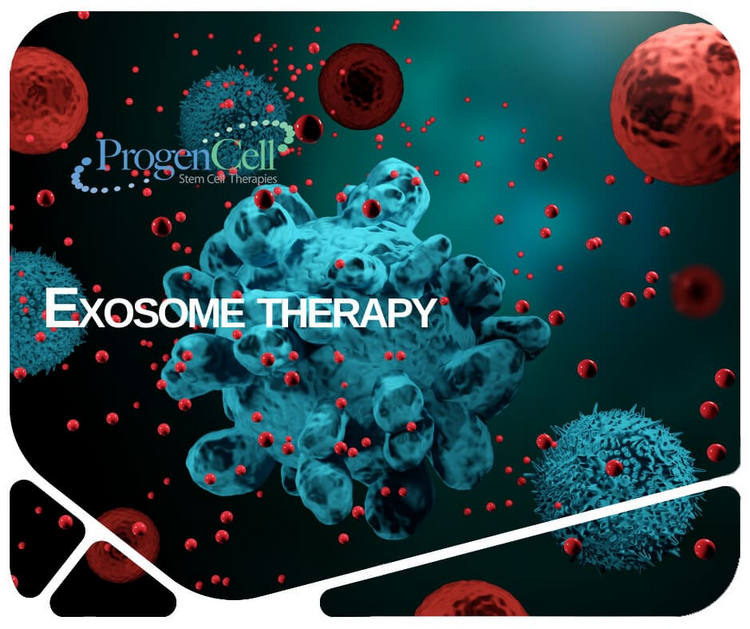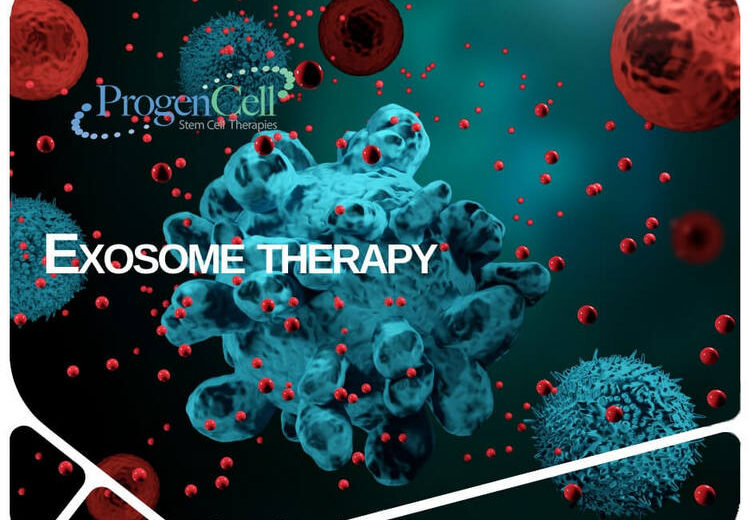
Advances in regenerative medicine have brought new treatments to improve quality of life and provide solutions to diseases that are difficult to treat. Exosome therapy is one of the most innovative, with optimistic prognosis and a wide variety of application. Below we will tell you what it consists of and for what conditions exosome therapy is recommended.
What is an exosome?
Table of Contents
Exosomes are small extracellular vesicles that are released from cells. The term “exosome” was first described 30 years ago as small bubbles with a diameter between 40 and 100 nm, which are secreted by most cells.
Within the physiological characteristics of exosomes we find a lipid membrane structure, internally covered with proteins, RNA, micro RNA and genetic material from different cell types. Stem cells are the main producers of exosomes. These are formed by intraluminal vesicles (ILVs), although it should be noted that not all ILVs can form exosomes. During SIL formation, the membrane buds from the cytoplasm and enters the endoplasm.
Exosomes act as messengers by emitting protein signals and genetic information from DNA and RNA, which is why they have an important therapeutic role. Its function is to travel throughout the body emitting signals to tell the cells what is happening in nearby areas, how they should behave and what substances they should produce.
The sources of isolation of exosomes are the mesenchymal stromal cells of the bone marrow. Through various investigations they have been isolated from other cells such as platelets, B lymphocytes, epithelial cells of the intestine, tumor cells and dendritic cells.
Exosomes are released by various cell types, both hematopoietic (lymphocytes, platelets, dendritic cells, and macrophages) and non-hematopoietic (fibroblasts, tumor cells, astrocytes, and Schwann cells) into fluids such as lymph, amniotic fluid, saliva, blood, cerebrospinal fluid, and urine.
Stem cells and exosomes
Stem cells are the raw material of the body. From them all other cells with specialized functions are formed, including exosomes. Both are used for the treatment of various diseases, and have applications in the area of aesthetic medicine.
Next, we will tell you about the differences between both therapies.
Stem cell therapy
Autologous (from the patient’s own) or allogeneic (from a donor) transplant can be used in stem cell therapy. These cells can be obtained from bone marrow, umbilical cord blood, peripheral blood, among other sources, and then activated and reintroduced into the patient through a graft.
Stem cell treatment is capable of regenerating organs that have been affected by disease. They have a wide field of application, it is a safe treatment, with proven effectiveness and with results from the first session.
Exosome therapy
Exosomes are not cells, but microvesicles that contain proteins, micro RNA, growth factors that act as communication bridges between cells so that they fulfill a specific role in a regeneration treatment.
Treatment with exosomes is safe, however, the quality of the product obtained depends to a large extent on the general health of the patient.
For this reason, the tissue from which they will be obtained is selected so that the substances they contain are effective and have good results.
The results are long-lasting and, in some cases, one or two sessions is enough, but the specialist will recommend more if he considers it necessary.
Are there risks?
When we talk about exosomes, the risks are minimal. This is because the product is relatively easy to obtain, is applied through intravenous infusions, and does not require hospitalization.
Exosome therapy benefits
Exosomes structure allows them to be easily distributed throughout the body, they even have the ability to cross the blood brain barrier, that is, they travel from the circulating blood of the extracerebral fluid to the central nervous system. For this reason they are used in the treatment of many ailments, including neurodegenerative diseases.
Exosomes can be used to treat diseases that damage cells and affect other organs. Stem cell and exosome therapy can even be combined for cell rejuvenation. Also to assist in regeneration processes by improving communication between cells, transporting growth factors, proteins and reducing inflammatory processes.
How long does it take to see results?
The results of exosome therapy are gradual, and the patient’s health will improve little by little, but its benefits are long lasting.
We hope this information will be useful to you. At ProgenCell we are specialists in regenerative therapy with stem cells, stem cell therapy for anti aging in Mexico and intravenous therapy to improve the condition of various diseases and promote general well being.
We also offer treatments for other conditions, such as stem cell therapy for rheumatoid arthritis, stem cell therapy for alzheimer’s, stem cell therapy for MS in Mexico, stem cells for knees, for diabetes and more.
To learn more, contact us through our form. Schedule your assessment appointment with our specialists and improve your health and quality of life.










